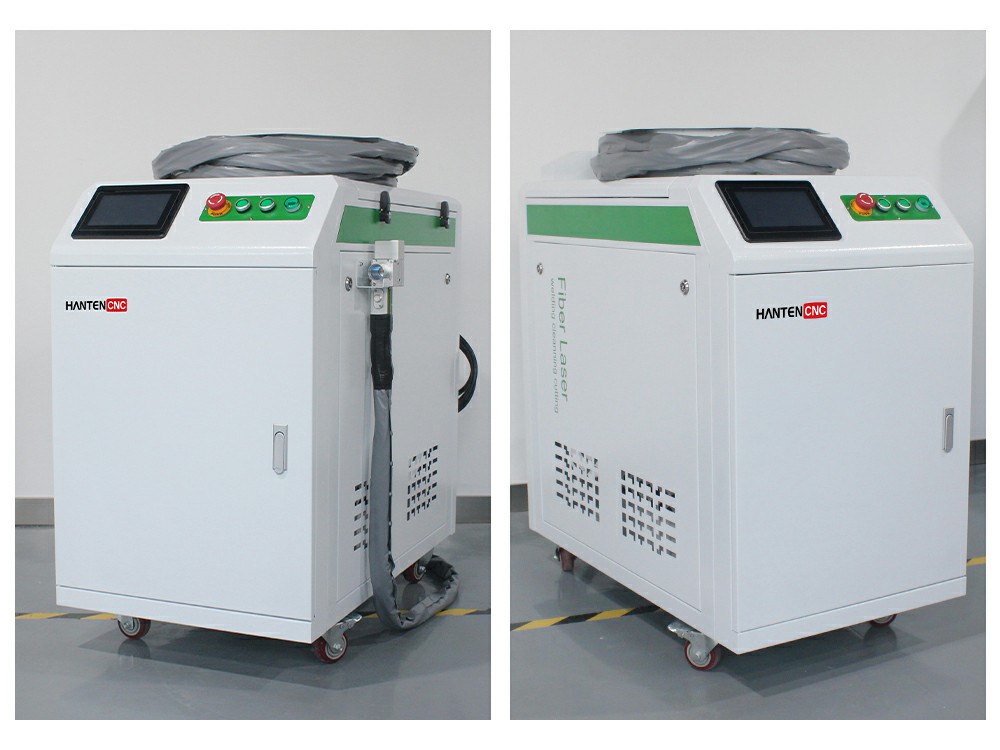Revolutionizing Surface Cleaning: The Science and Applications of Laser Cleaning Machines
Laser cleaning machines are transforming industries by offering a precise, efficient, and eco-friendly alternative to traditional cleaning methods. By using focused laser beams, these machines remove contaminants, rust, paint, and coatings from surfaces without damaging the base material, making them ideal for applications in manufacturing, aerospace, and automotive sectors.

Understanding Laser Cleaning Machines
What Are Laser Cleaning Machines?
How Does Laser Cleaning Work?
-
Laser Emission: The machine emits a focused laser beam onto the surface.
-
Thermal Ablation: The contaminants absorb the laser energy and are vaporized or sublimated.
-
Material Retention: The underlying material remains intact due to the laser’s precision.
Types of Laser Cleaning Machines
-
Fiber Laser Cleaning Machines: These are highly versatile and suitable for cleaning metals, rust, and coatings.
-
CO₂ Laser Cleaning Machines: Designed for non-metal surfaces, such as plastics or glass.
-
Anilox Laser Cleaning Machines: Specialized for cleaning anilox rollers in printing industries.
Key Advantages of Laser Cleaning Technology
1. Precision Cleaning
2. Eco-Friendly Operation
3. Versatility Across Applications
-
Metal Surface Cleaning: Rust, paint, and coatings can be effectively removed.
-
Aerospace Applications: Ultrasonic cleaning systems are often complemented by laser cleaning for high-precision tasks.
-
Printing Industries: Anilox rollers require specialized cleaning, which laser machines deliver with efficiency.
4. Cost-Efficiency
Comparing Laser Cleaning Machines with Traditional Methods
1. Laser vs. Chemical Cleaning
-
Efficiency: Laser cleaning is faster and more thorough.
-
Eco-Friendliness: Chemical cleaning generates waste and poses environmental risks.
-
Safety: Lasers eliminate the need for handling hazardous substances.
2. Laser vs. Abrasive Blasting
-
Surface Integrity: Abrasive blasting can damage surfaces, while laser cleaning is non-invasive.
-
Precision: Lasers are more accurate, making them ideal for delicate components.
-
Cost: Abrasive blasting may have lower upfront costs but higher long-term operational expenses.
3. Laser vs. Ultrasonic Cleaning
-
Application: Ultrasonic cleaning is effective for small, intricate parts but limited in scope.
-
Speed: Laser cleaning is faster for larger surfaces.
-
Versatility: Lasers can handle a wider range of materials and contaminants.
Cost Analysis of Laser Cleaning Machines
Price Overview
|
Machine Type
|
Average Price (2025)
|
Applications
|
|
Fiber Laser Cleaning Machine
|
$$20,000$$50,000
|
Metal surfaces, rust, coatings
|
|
Anilox Cleaning Machine
|
$$15,000$$30,000
|
Printing industry
|
|
CO₂ Laser Cleaning Machine
|
$$10,000$$25,000
|
Plastics, glass
|
ROI Breakdown
Industries Revolutionized by Laser Cleaning Technology
Laser cleaning has emerged as a game-changing solution across multiple industries, offering precision, efficiency, and environmental benefits compared to traditional cleaning methods. Here's an in-depth look at key sectors benefiting from this advanced technology:
1. Aerospace: Precision Cleaning for Critical Components
The aerospace industry requires absolute precision when maintaining turbine blades, engine parts, and airframe components. Laser cleaning removes contaminants like oxides, carbon deposits, and coatings without damaging the base material—a crucial advantage over abrasive methods. Many facilities now combine laser cleaning with ultrasonic systems for comprehensive surface preparation before inspections or repairs.
2. Automotive: Rust Removal & Paint Stripping Redefined
Automakers and restoration specialists rely on fiber laser cleaning machines to efficiently strip paint, remove rust, and prepare surfaces for welding. Unlike sandblasting, lasers eliminate hazardous waste and reduce labor costs. Major manufacturers use this technology for:
-
Pre-weld cleaning to ensure strong bonds
-
Restoring vintage cars without damaging original metal
-
Removing coatings from aluminum and composite materials
3. Manufacturing: Enhancing Metal Fabrication
From shipbuilding to industrial machinery, laser cleaning improves metal surface preparation for welding, coating, and bonding. Key applications include:
-
Removing mill scale from steel before welding
-
Cleaning molds and dies without wear
-
Decontaminating sensitive machinery parts
4. Printing: Maintaining Anilox Roller Performance
In flexographic printing, anilox cleaning machines using laser technology restore clogged cells with micron-level accuracy. This prevents ink transfer issues and extends roller lifespan—critical for high-volume production.
5. Additional Sectors Adopting Laser Cleaning
-
Energy: Cleaning turbine components and solar panels
-
Rail: Removing oxidation from tracks and train parts
-
Cultural Heritage: Restoring artifacts without chemicals
